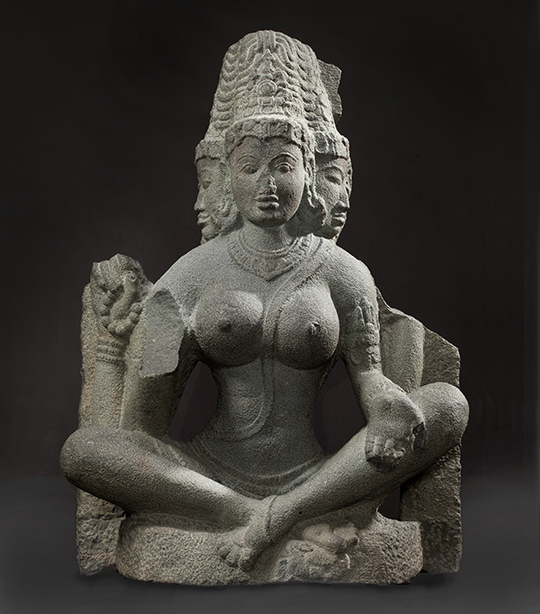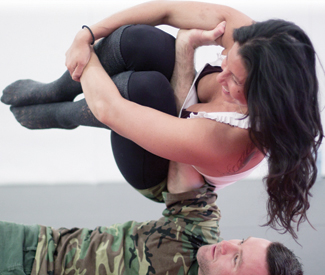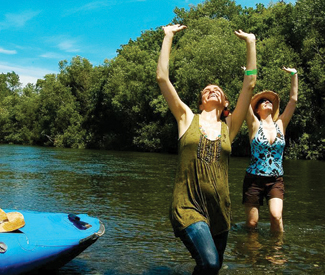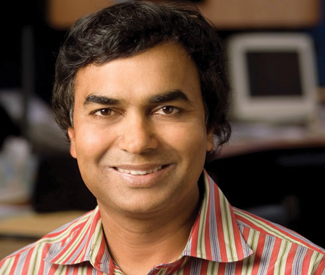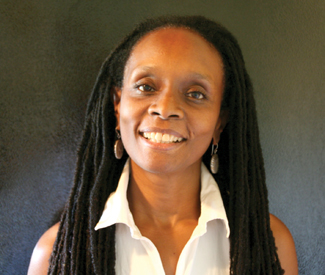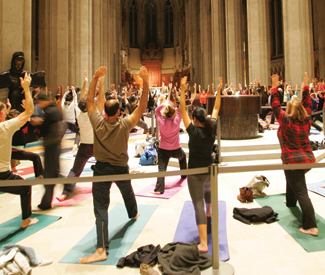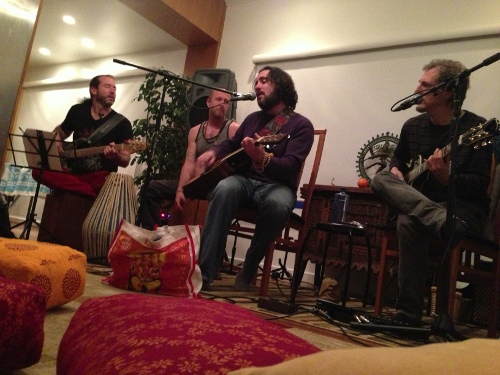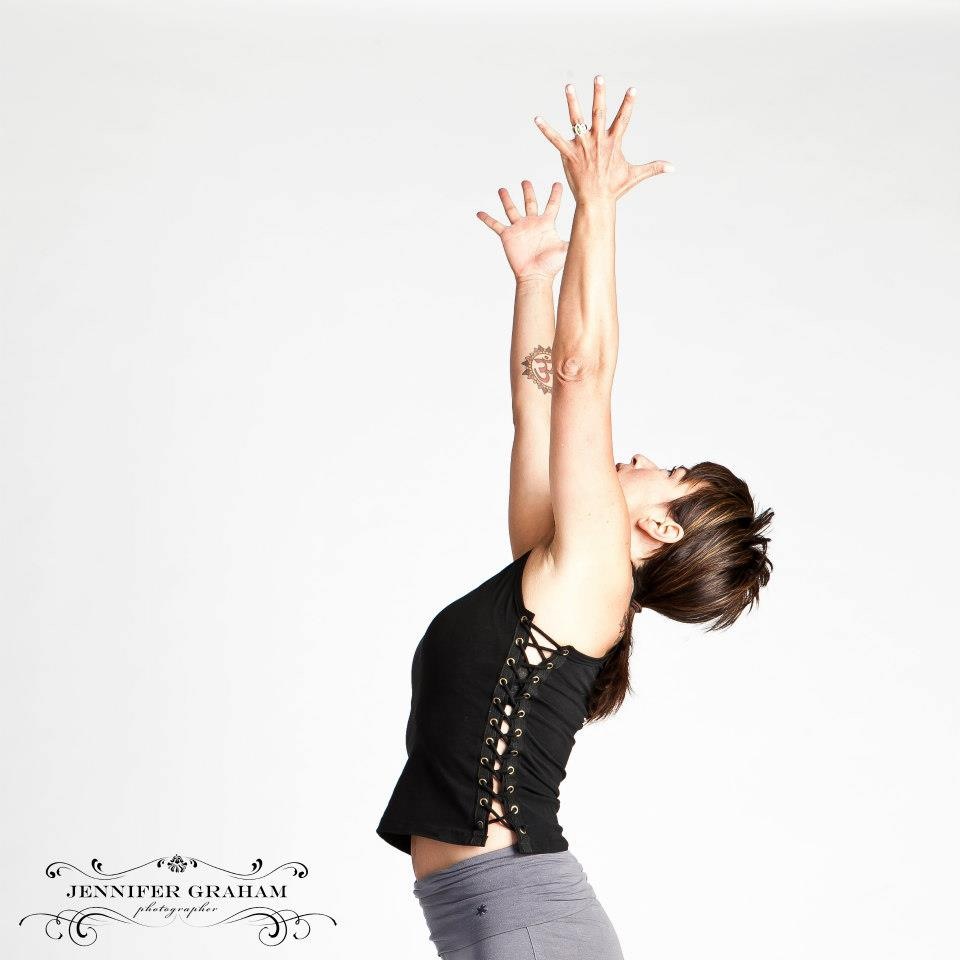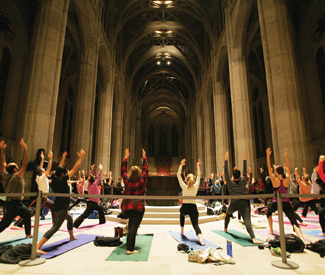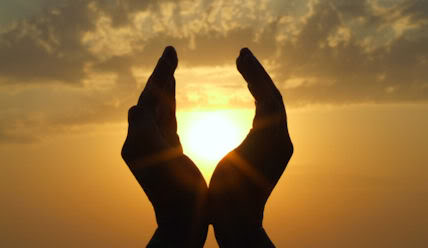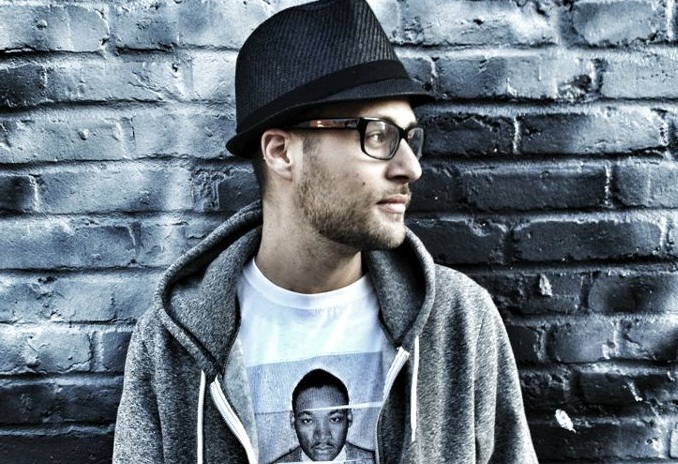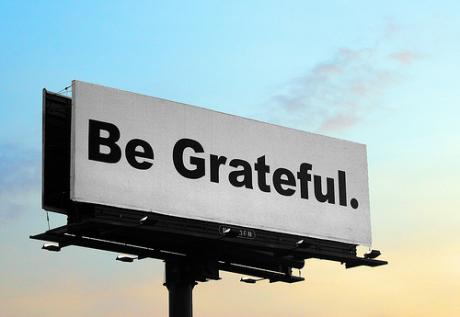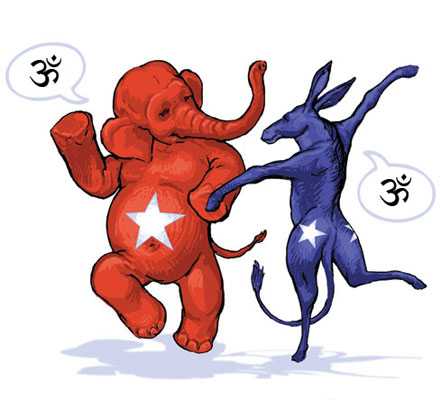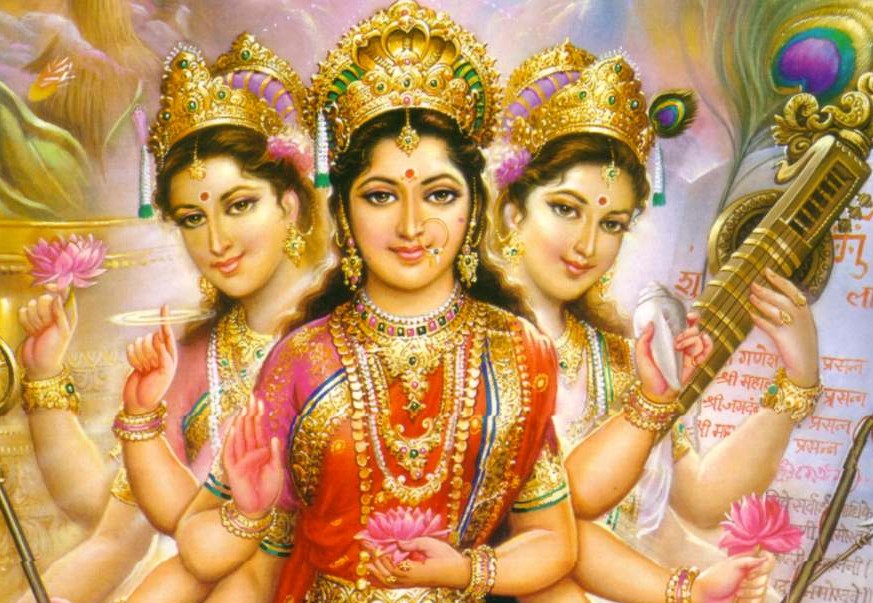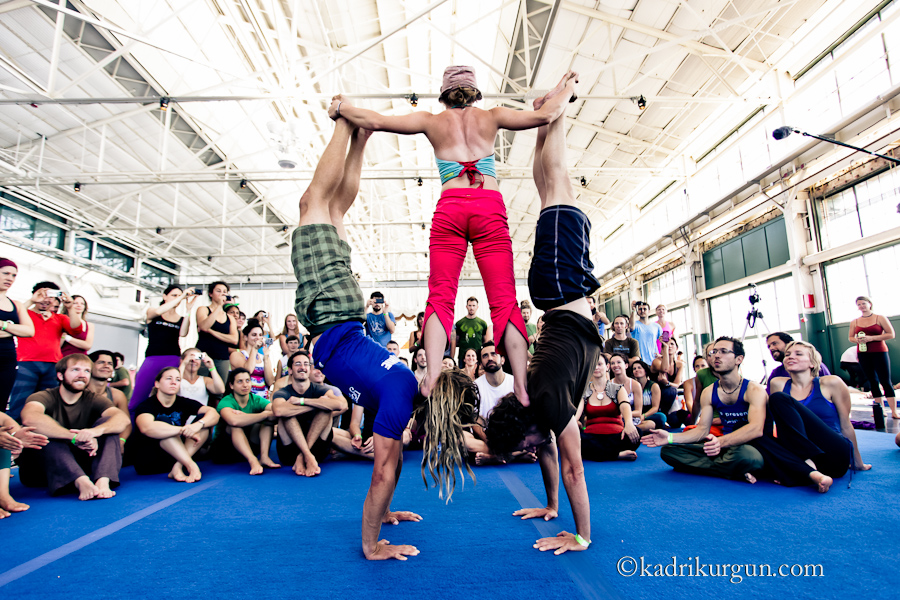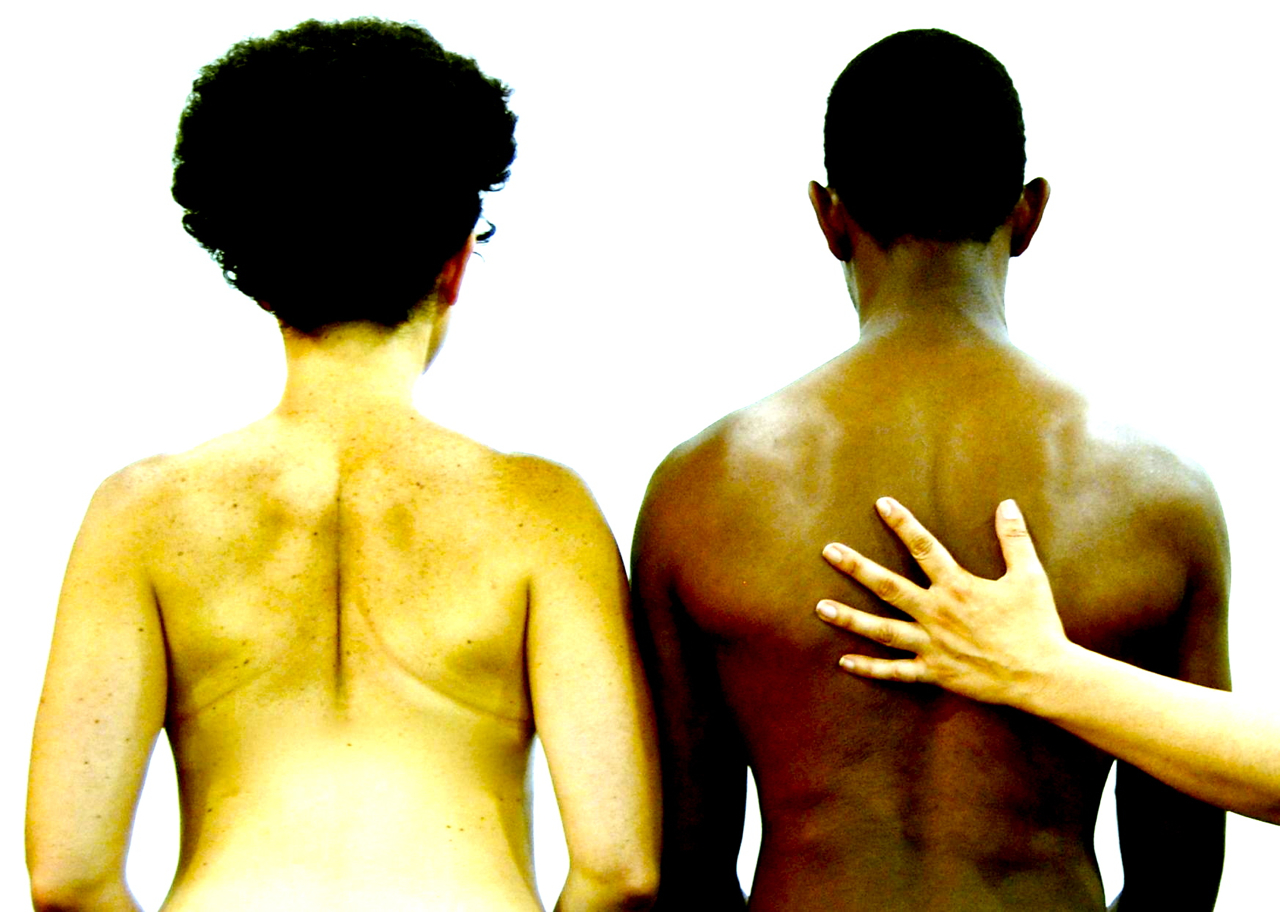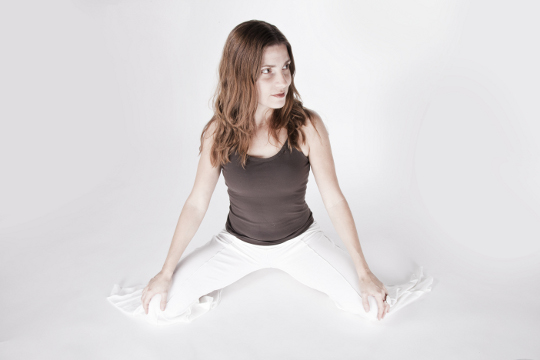culture@sfbg.com
VISUAL ART/YOGA I attended my first yoga class in 2000, at the Mindful Body on California Street. I’d arrived by way of much prodding from a journalism colleague who thought yoga might help with an increasingly debilitating chronic pain condition I’d mysteriously developed. A Brooklyn-raised fiery gym rat in my early 20s, I had just moved to San Francisco and simply couldn’t fathom doing this New-Agey exercise routine. I’d also recently been to India (to see the country — not to learn yoga), and I’d resented the hippie Westerners who seemed to be eagerly consuming yoga study, but staying clear of the places where starvation and disease had riddled the practice’s homeland.
With all of this emotional baggage — and an additional few suitcases that I’ll leave unpacked for the moment — I put on a pair of old blue leggings and an oversized T-shirt, and dragged myself to yoga class. And then I went back again.
It was a good workout. But, more significantly, by the time each class was midway through, my pain would temporarily disappear. Plus, the practice made me feel a way no native New Yorker ever expects to feel: peaceful. I committed myself to yoga harder and faster than I had to anything in years. It was doing something to me, changing me in some way.
Now it’s 2014; I’ve become a yoga teacher. And tonight I’m at the opening party for the Asian Art Museum of San Francisco’s “Yoga: The Art of Transformation,” the first ever comprehensive art exhibit on yoga’s history. Upstairs, yoga teacher-rapper-celebrity-activist MC Yogi is performing his signature ditty “Ganesh is Fresh” to a crowd of fans, some dressed in colorful spandex yoga clothes, others in traditional Indian garb, and still others in contemporary SF duds. Downstairs, some people are engaged in high-level philosophical discussion about the winding path of yoga history, while others are learning AcroYoga maneuvers, drinking “all-natural, gluten-free” margaritas, or striking yoga poses for Instagram-able photos in the museum entranceway.
From an anthropological perspective, it’s quite the scene. And though I’m intimate with my own personal trajectory, there’s a bigger question at hand. How did we all get here?
UNEARTHING ROOTS
Though many of us have been taught (or have simply assumed) that ancient Indian sages were waking up at dawn to do sun salutations, we now know that this was likely not the case. Recent scholarly research tell us that the yoga we practice today in our heated, hard wood-floored, lavender-smelling classrooms is a new breed of practice, most of which was developed in the last century. So, what is the origin of this practice?
In town until May 25, this gorgeous 135-piece sprawling exhibit — which includes towering Tantric stone goddesses, colorful renderings of intricate yogic energy systems, and exciting film footage of 1930s yoga masters — offers some answers. Originally created by art historian Debra Diamond for the Sackler and Freer Galleries at the Smithsonian Institution in Washington, DC, the exhibit’s just arrived to town amid great enthusiasm. “San Francisco has such a long rich history with yoga,” says Qamar Adamjee, in a recent phone conversation, who, along with Jeff Durham, curated the local presentation of the exhibit. “It was a no-brainer to bring the exhibit here.”
Though yoga’s origin is typically thought to go back at least 2,500 years, the exhibit’s scope is from 100 CE to the 1940s; the museum, along with a board of local yoga advisers, also created supplemental content, like a California yoga timeline, and supplemental programming, including talks with local luminaries. “It’s important to have a sense of where you came from,” says senior yoga teacher Judith Hanson Lasater, founder of both the Iyengar Yoga Institute in San Francisco and Yoga Journal magazine, and one of the exhibit’s advisers, told me over the phone. “That helps us define who we are.”
The art here is laid out by topic, less than it is chronologically, because yoga’s history did not develop in a straight line; different aspects of the practice appeared in different places at different times. “When talking about the exhibit, I like to use the word histories instead of history,” says Adamjee. “While we associate yoga as primarily a Hindu practice, its history is actually shared by three main religious systems of ancient India: Buddhism, Jainism, and Hinduism.” She adds that connections to Islam and Sufism are also seen in the exhibit. “This multiplicity is what makes it so fascinating and rich.” It’s important to remember, too, that this is yoga’s history as depicted primarily by visual art, not by texts — and that the story could change (and likely will) as new findings surface. Yoga research is currently one of the fastest growing fields in South Asian studies.
But for now, our journey begins not where some might expect — say, with a serene yogi practicing Tree Pose by a river bank — but with practices of extreme austerity in the name of enlightenment.
ANCIENT RELEASE
In modern yoga culture, we use the practice to help heal the body — I know I did. But some of the earliest yogis had a different point of view. Well-preserved stone sculptures from the first millennium depict worshippers starving themselves in the hopes of being released from the cycle of reincarnation. (Mortal life here was viewed as pure suffering and these devotees were hoping not to come back again.) An emaciated, pre-enlightenment Buddha is depicted here, too, in an intricate ivory carving from 700-800 CE.
A thousand years later, the art becomes more sophisticated and more focused on deity worship, but practices of austerity and self-mortification remain. For instance, detailed paintings with tiny strokes show devotees of Shiva uncomfortably hanging themselves upside down from trees, or standing or sitting in one position for years. In the mid-late 1800s, photographs begin to appear showing Indian ascetics doing extreme things: lying on a bed of nails, wearing an irremovable contraption around one’s neck, even piercing one’s penis with a heavy metal object.
The images themselves are hard for our soft Western eyes to endure, but even less palatable is the story behind them. With the British invasion, the rights of wandering ascetics were restricted, so they moved from forests into cities, where they were forced financially to parade their devotional practices to local audiences for a quick rupee. Many of the photographs on display were shot by professional British photographers, and were then turned into postcards that the photographers sold for great profit throughout Europe. Non-yogi locals took note that money could be made from Europeans by staging tricks, and it soon became hard to tell who was a true ascetic, and who was a random yoga hack laying on a bed of nails for cash.
YOGA MAGIC
Though yoga was initially seen as a practice of bodily transcendence, some practitioners decided that, so long as they were in their bodies, it might be useful to score some superhuman psychic and physical abilities. During the Tantric era, these yogis are believed to have used practices like mantra, visualization, and goddess worship (sometimes occurring at cremation grounds) to channel these powers.
One of the exhibit highlights is a room filled with striking stone goddesses from this time. The slate-gray statues of worship, which date from 900-975 CE, show large-breasted, small-waisted female yogis (yoginis) complete with fangs and pet snakes, holding cups meant for liquor or blood. Today the word “yogini” is used when simply referring to female practitioners, but these original figures were fierce and to be feared. (They were also sculpted with perfect bods, offering an interesting parallel to the depictions of female practitioners in modern day yoga magazines.)
Later on, in 1830, Indian watercolor and gold paintings show the mystical use of yogic superpowers: to win battles by creating a flood where enemies are charging forth, and to magically fly through the sky. Of course, a hundred years later, the West chimes in, and starts making a mockery of yogic powers in the cinema and in profitable magic shows like “Koringa, the Female Yogi.”
MINING THE FLOW
Throughout the early years, we see all manners of meditators, perhaps practicing classical yoga (as handed down by Patanjali’s Yoga Sutras), often sitting with legs in a lotus-like position, gazing up or inward toward a third eye. But as the years pass, the physical body starts to take more prominence, in the Tantra and Hatha Yoga traditions, as a tool on the yogic path of self-realization. One treasure here is a 10-page excerpt from an early 1600s Muslim Sufi book called Bahr al-hayat (Ocean of Life), said to contain the earliest illustrated renderings of physical yoga poses. Most of the poses shown here are seats like lotus pose, but there is one drawing of a guy rocking a headstand.
Around the 1700-1800s, intricate Tantric renderings of the energetic yoga body, including the chakras (energy centers), appear. A total must-see: a watercolor scroll that contains detailed, gold-laced drawings of Ganesh and his two wives (at the root chakra), and Shiva and Shakti joined together (in the crown chakra).
In the final gallery, we come into the 20th century. Yoga made its big debut in the US when Swami Vivekananda, who practiced Raja Yoga, based on Hindu philosophy and meditation, made a speech about yoga at the first World’s Parliament of Religions in 1893. Seven years later, he set up the Vedanta Society in San Francisco to offer his teachings. (Many of his materials are displayed here.) The early 1900s is also where we begin to see evidence of the more athletic yoga practice most of us do today. This new form came about as prominent Indian yoga teachers began to blend ancient postures and energetic techniques with strength-training exercises that had been brought in by their British invaders.
A mesmerizing video shows T. Krishnamacharya (often considered the grandfather of modern day yoga) and his young disciple BKS Iyengar performing expertly executed postures in smooth, rhythmic flows — now things are really starting to look familiar. Displayed here are also numerous books promoting yoga as a way to improve one’s health, including a book by Indian bodybuilder Raja of Aundh called Surya Namaskars (The Ten-Point Way to Health). According to the exhibit, this text from the 1920s is where our beloved sun salutations were initially birthed.
While the new physical fitness-form of yoga may have looked different than its predecessors of seated meditation, goddess worship, and self-mortification, it required the same intense attention and dedication. It arrived to the US on the tails of Vivekananda’s yoga, so by the mid-1900s, West Coasters already had different practices from which to choose.
Yoga caught on quickly here in San Francisco. By 1955, Walt and Magana Baptiste (parents of famed modern-day yogi Baron Baptiste) had founded the Center for Physical Culture, one of SF’s first bona fide yoga studios. The 1970s saw the opening of Integral Yoga and the Iyengar Yoga Institute in San Francisco, as well as the birth of Yoga Journal magazine. Yoga soon became not only a practice, but a business and a lifestyle. Over the years, Americans here and throughout the country started blending various yoga teachings, shaping the practice to address our cultural, health, fitness, community, commercial, and varied spiritual (or anti-spiritual) needs and interests. Today, San Francisco is one of the world’s most booming yoga communities. Every offering one can imagine exists here: from contemplative retreats to sweaty flow classes to corporate yoga, ecstatic chanting, naked yoga, scholarly study, and yoga therapeutics.
IN THE NOW
The exhibit helps us get a sense of where the practice came from — but it still begs the question of what yoga actually is. Is yoga a practice of transcending the body in an effort to attain enlightenment? Is it a way of gaining supernatural powers so you can beat your opponents at war? Is it a seated meditation practice focused on stilling the mind, or a physical fitness routine designed to rid the body of impurities? Is it something you do on the weekends in your Lululemon leggings to feel good before going for mimosas at a hipster brunch spot?
“The exhibit forces some interesting self-reflection about our beliefs,” says Kaitlin Quistgaard, the former longtime editor of Yoga Journal magazine, in a phone conversation. “What do we actually know to be true about yoga?” Quistgaard was part of the advisory board that helped to create the exhibit’s supplementary content. “For me, the thing that ties it all together is self-awareness. Through any yoga practice, even one that would seem completely physical, there’s a process of coming to know yourself.” She adds that it’s the development of this deeper awareness that can enable us to lead more connected and fulfilling lives.
In the same vein, Adamjee reflects that one of the key aspects uniting all of the yoga paths over the years is the “radical insight that human beings possess the ability to transcend our own suffering.” Looking back at my own path, it’s easy to see the truth in this. Whether a yogi is engaged in intense physical or energetic practices, deep meditation, scholarly pursuit, or singing the names of Indian gods, the goal has always been — through devotion and attentive awareness — to find peace. To experience, if only briefly, that delicious taste of freedom.
As a writer and practitioner, I love the study of yogic history. But there is also a part of me that knows that the history is not as important as our actual practice — what we do each day, how we show up to our lives. As any yoga devotee will tell you, the past and the future don’t really exist; all we can ever really know is this very moment.
“Yoga will live on,” says Adamjee, somewhat wistfully. “But it will become something different. We are just another moment in that long timeline.”
YOGA: THE ART OF TRANSFORMATION
Through May 25
Asian Art Museum of San Francisco
200 Larkin, SF.
(See next page for more details)
HAS YOGA SOLD OUT?
Yoga started as a spiritual discipline. Now, it’s reportedly a $27 billion dollarindustry in the US with an estimated 15 million practitioners, not to mention high fashion clothing, expensive yoga vacations, and “yogalebrity” teachers. Some say that commercialization is just what the practice had to do to survive in a capitalist culture. Others, like Indian American graphic artist Chiraag Bhakta, find the face of modern day yoga disturbing. Bhakta’s art installation, #WhitePeopleDoingYoga, will be on view at the Asian Art Museum as a supplement to the larger yoga exhibit, March 26-May 25.
A 13-by-30-foot wall of Western yoga marketing materials (from the 1960s-80s), it includes book covers, advertisements, and album covers that depict white folks promoting yoga for all kinds of spiritual, dietary, and fitness purposes, wearing everything from canary yellow leotards to traditional Indian garb. The idea of putting all of this ephemera on one wall, he says, is to give the viewer a feeling of being suffocated — which is how the onslaught of these images have made him feel. “It’s fascinating to me that this ancient practice from my culture is being mined and then appropriated and commodified, while removing everyone that looks like me,” he adds. “The philosophy of yoga is the dissolution of one’s ego — and the irony is that there’s so much ego being attached to all of this.”
Bhakta’s exhibit is part of *Pardon My Hindi, a project he created to explore first generation Indian American identity using humor and serious social commentary. Bhakta admits that he himself practices yoga at studios in the Bay Area, and he’s not against the popularization of the practice. He simply questions the way in which it’s being done. “My goal is just to bring this discussion to the table,” he says.
GO DEEP
The museum is offering some amazing activities during the show’s run. Highlights include storytelling, dance, and yoga, as well as lectures by yoga luminaries. Among the scheduled speakers are Senior Iyengar teacher Manouso Manos, director of UCSF’s Osher Center for Integrative Medicine Dr. Margaret Chesney, curators Debra Diamond and Qamar Adamjee, AcroYoga co-founder Jenny Sauer-Klein, mindfulness educator Meena Srinivasan, Google’s Gopi Kallayil, graphic designer Chiraag Bhakta, and yoga historian Eric Shaw. For the full list of events, go to www.asianart.org/exhibitions_index/yoga-related-events.
Karen Macklin is a writer and yoga teacher living in San Francisco. Find out more about her at www.karenmacklin.com .

